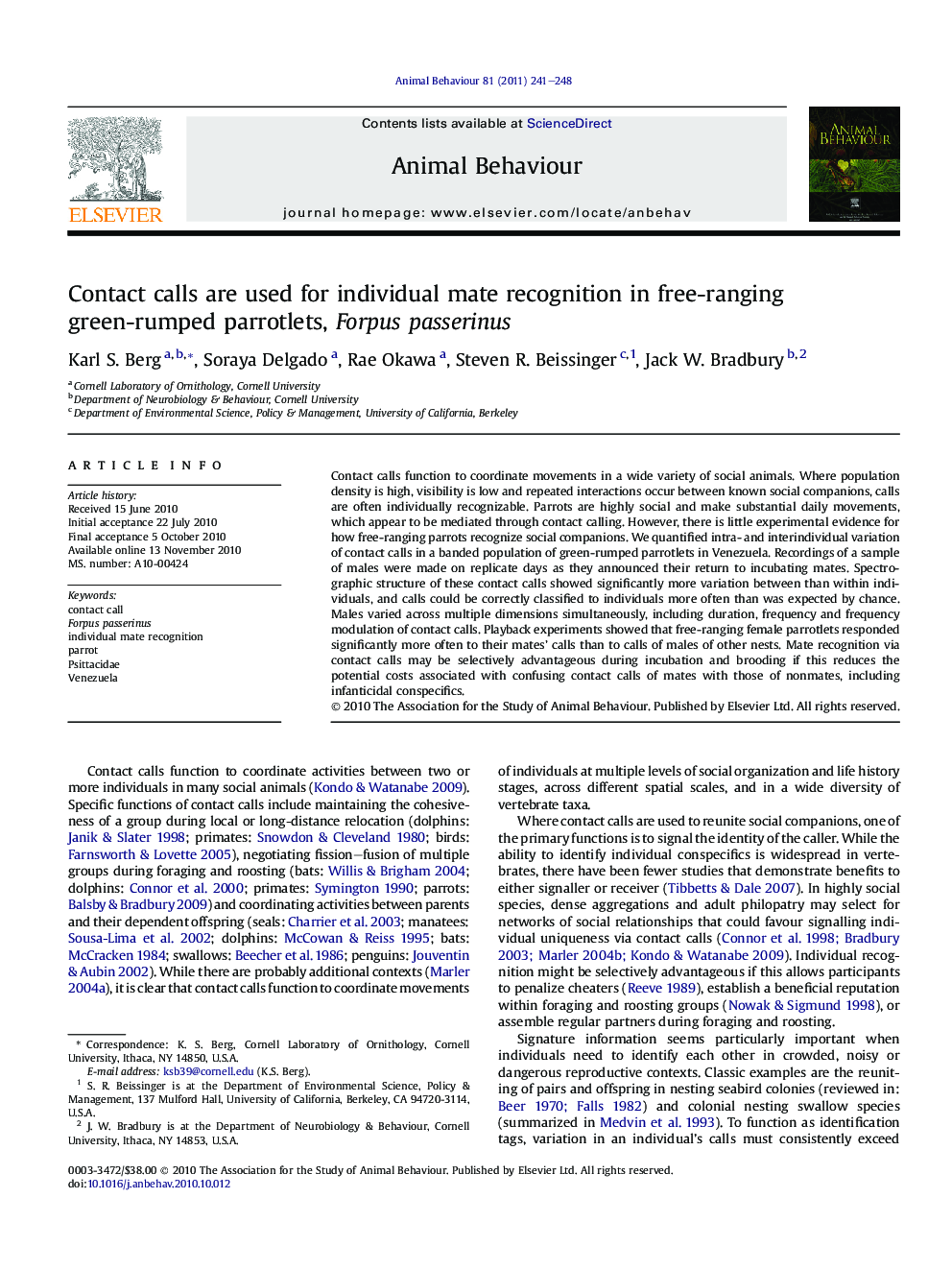| Article ID | Journal | Published Year | Pages | File Type |
|---|---|---|---|---|
| 10971052 | Animal Behaviour | 2011 | 8 Pages |
Abstract
Contact calls function to coordinate movements in a wide variety of social animals. Where population density is high, visibility is low and repeated interactions occur between known social companions, calls are often individually recognizable. Parrots are highly social and make substantial daily movements, which appear to be mediated through contact calling. However, there is little experimental evidence for how free-ranging parrots recognize social companions. We quantified intra- and interindividual variation of contact calls in a banded population of green-rumped parrotlets in Venezuela. Recordings of a sample of males were made on replicate days as they announced their return to incubating mates. Spectrographic structure of these contact calls showed significantly more variation between than within individuals, and calls could be correctly classified to individuals more often than was expected by chance. Males varied across multiple dimensions simultaneously, including duration, frequency and frequency modulation of contact calls. Playback experiments showed that free-ranging female parrotlets responded significantly more often to their mates' calls than to calls of males of other nests. Mate recognition via contact calls may be selectively advantageous during incubation and brooding if this reduces the potential costs associated with confusing contact calls of mates with those of nonmates, including infanticidal conspecifics.
Related Topics
Life Sciences
Agricultural and Biological Sciences
Animal Science and Zoology
Authors
Karl S. Berg, Soraya Delgado, Rae Okawa, Steven R. Beissinger, Jack W. Bradbury,
